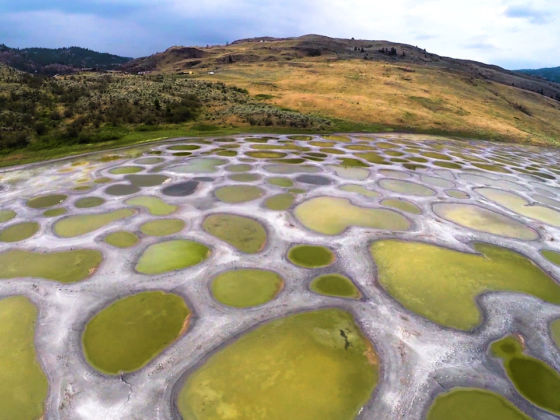For years, I’d passed by Spotted Lake along British Columbia’s Highway 3 (aka the Crowsnest Highway), driving between Vancouver and the interior. I always glimpsed it out the window, but it wasn’t until after many trips that I finally pulled over to have a better look. The small lake is rich with minerals and when the weather is hot and much of the water has evaporated, these minerals are concentrated into small pools which give the lake its spotted and colorful appearance.


Canada's Spotted Lake Is the Strangest Body of Water You'll Ever See
Summer is the best time to check out the lake. The small pools change color and size throughout the hot season, ranging from blues to greens and yellows. In the winter and in the spring, however, the spots are not as visible.
Besides being an area of ecological importance, Spotted Lake is also a culturally sensitive area for the Okanagan Syilx First Nations people. Spotted Lake is known as Kłlilx’w to the Syilx First Nations people who have traditionally used it for therapeutic purposes. The Syilx First Nations people hold healing ceremonies at Spotted Lake twice a year. It is customary for First Nations people to make an offering upon coming to the lake to pay respect to their ancestors who have used the lake for healing purposes before them.
Spotted Lake, and the 22 hectares of land around it, belong to the Okanagan Nation Alliance Chiefs Executive Council since 2001. It was purchased to preserve this sacred area for future generations and protect it from development.
The lake is about a 10-minute drive west of Osoyoos (about 4.5 hours east of Vancouver) and can easily be seen from the road. There’s a small pullout with room for a few cars to park. Once parked you’ll be confronted with a closed gate because it’s prohibited to get any closer, but the lake’s elevated position gives a good perspective. Respect the signs and do not trespass to get closer to the lake.
If you want to learn more about the Syilx First Nations people and the land where Spotted Lake sits, visit the Nk’Mip Desert Cultural Centre in Osoyoos.